The Mobile-Tensaw River Delta, located in southern Alabama, is a sprawling labyrinth of rivers, creeks, marshes, and bayous. This delta, often dubbed “America’s Amazon,” is one of the most biologically diverse regions in the United States. Spanning over 260,000 acres, it serves as a critical ecological hotspot, supporting a staggering array of plant and animal life. This article explores the biodiversity, ecological significance, and unique characteristics of this vital wetland ecosystem.
The Delta’s Geographical and Ecological Context
Situated where five major rivers converge—the Mobile, Tensaw, Apalachee, Blakeley, and Spanish Rivers—the Mobile-Tensaw Delta is the largest river delta in Alabama and the second-largest in the United States. This complex network of waterways empties into Mobile Bay and the Gulf of Mexico, creating a dynamic estuarine environment.
The delta’s diverse landscapes include swamps, marshes, hardwood forests, cypress-tupelo forests, and open waters. These varied habitats provide niches for countless species, making the delta a critical area for both migratory and endemic wildlife.
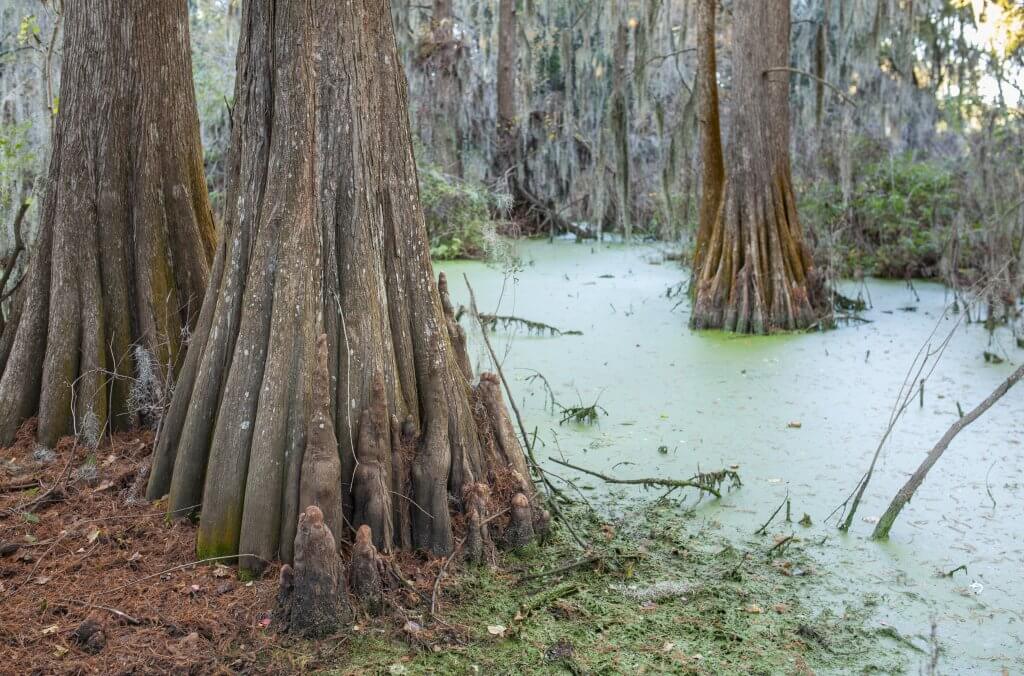
A Haven for Flora and Fauna
Plant Diversity
The Mobile-Tensaw Delta boasts an astonishing variety of plant species. The region’s mix of freshwater and brackish environments supports ecosystems ranging from floodplain forests to grassy marshes. Some key plant species include:
- Cypress and Tupelo Trees: These iconic trees dominate the swampy areas of the delta, their buttressed trunks and “knees” forming a striking visual landscape.
- Pitcher Plants and Other Carnivorous Flora: The delta’s bogs are home to carnivorous plants like pitcher plants and sundews, which have adapted to nutrient-poor soils by trapping and digesting insects.
- Rare Orchids: Several orchid species thrive in the delta’s unique microclimates, including the delicate white fringed orchid and the grass pink orchid.
Aquatic Life
The delta’s waterways teem with aquatic species, many of which are vital to local ecosystems and economies. Key species include:
- Fish: The Mobile-Tensaw Delta is home to over 126 species of fish, including the alligator gar, largemouth bass, and Gulf sturgeon.
- Amphibians and Reptiles: The region supports a wealth of amphibians and reptiles, such as frogs, salamanders, turtles, and alligators. The endangered Alabama red-bellied turtle, found only in this area, is a notable highlight.
- Invertebrates: The delta’s waters are rich with invertebrates like freshwater mussels, crayfish, and dragonflies, which play crucial roles in the food chain.
Birdlife
The Mobile-Tensaw Delta is a birdwatcher’s paradise, with over 300 recorded bird species. Some notable examples include:
- Migratory Waterfowl: Ducks, geese, and other waterfowl flock to the delta during migration seasons, utilizing its wetlands as critical stopover points.
- Wading Birds: Herons, egrets, and ibises are commonly seen foraging in the shallows.
- Raptors: Bald eagles and ospreys nest in the delta, drawn by its abundant fish populations.
- Songbirds: Warblers, thrushes, and other songbirds add to the avian diversity, particularly during spring and fall migrations.
Mammals
Mammals in the delta range from common species like white-tailed deer to elusive creatures such as bobcats and river otters. Aquatic mammals, such as beavers and nutria, are also integral to the delta’s ecosystem dynamics.
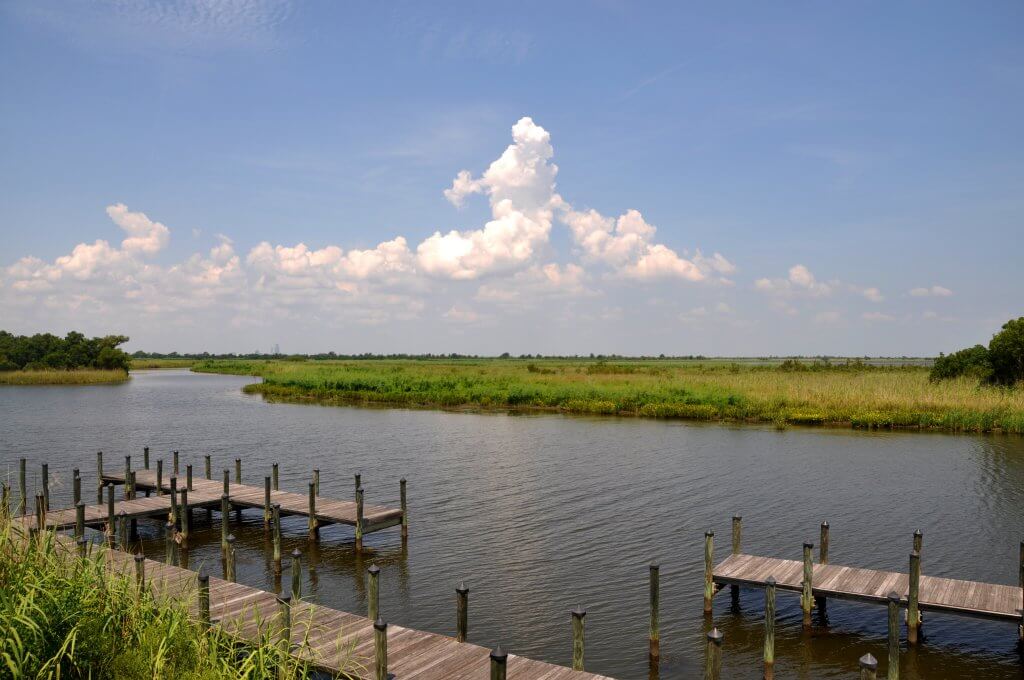
Ecosystem Services and Functions
The biodiversity of the Mobile-Tensaw Delta is not just a marvel of nature but also a cornerstone of ecological balance and human well-being. Here are some critical ecosystem services it provides:
Water Filtration
- The wetlands act as natural filters, removing pollutants and sediments from the water before it flows into Mobile Bay and the Gulf of Mexico. This process helps maintain water quality for both wildlife and human use.
Flood Control
- The delta’s floodplains absorb and store excess water during heavy rains and hurricanes, reducing the risk of downstream flooding in nearby communities.
Carbon Sequestration
- The dense vegetation of the delta captures and stores significant amounts of carbon dioxide, helping mitigate the impacts of climate change.
Habitat Provision
- The delta’s myriad habitats support a wide array of species, many of which are rare or endangered. This biodiversity contributes to the overall health and resilience of regional ecosystems.
Recreational and Economic Benefits
- The delta is a hub for outdoor activities like fishing, boating, and birdwatching, which contribute to local economies through tourism and recreation.
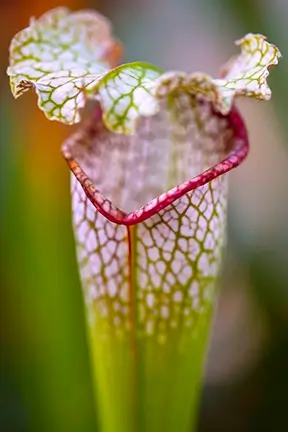
Threats to the Delta’s Biodiversity
Despite its ecological importance, the Mobile-Tensaw River Delta faces several threats that endanger its delicate balance:
Habitat Loss
- Urbanization, agriculture, and industrial development have encroached upon the delta’s habitats, reducing the area available for wildlife.
Pollution
- Runoff from agricultural fields, industrial discharges, and urban areas introduces pollutants like fertilizers, pesticides, and heavy metals into the delta’s waterways.
Climate Change
- Rising sea levels and changing precipitation patterns threaten to alter the delta’s hydrology, potentially disrupting its ecosystems.
Invasive Species
- Non-native species like the Chinese tallow tree and feral hogs compete with native flora and fauna, often to the detriment of the delta’s biodiversity.
Overfishing and Resource Exploitation
- Unsustainable fishing practices and resource extraction can deplete key species, undermining the delta’s ecological balance.
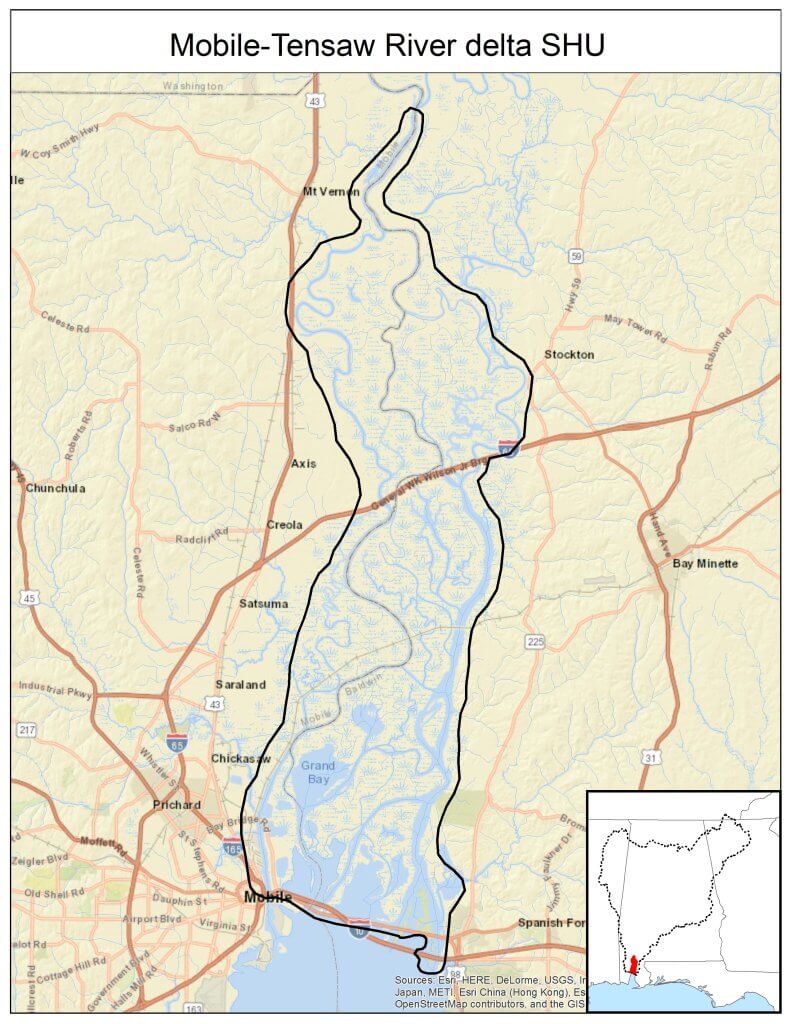
Conservation Efforts
Efforts to preserve and restore the Mobile-Tensaw River Delta are crucial for maintaining its biodiversity and ecosystem services. Key initiatives include:
Protected Areas
- Designation of wildlife refuges and conservation easements helps safeguard critical habitats from development and exploitation.
Habitat Restoration
- Projects aimed at restoring wetlands, replanting native vegetation, and removing invasive species contribute to the delta’s ecological health.
Water Quality Improvements
- Implementing best management practices for agriculture and industry reduces the amount of pollutants entering the delta’s waterways.
Community Engagement
- Education and outreach programs foster public awareness and involvement in conservation efforts, ensuring long-term stewardship of the delta.
Research and Monitoring
- Ongoing scientific research provides valuable insights into the delta’s ecosystems, guiding conservation strategies and adaptive management practices.
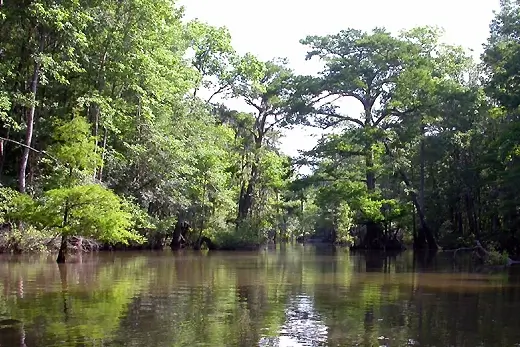
The Future of the Mobile-Tensaw River Delta
As one of the most biologically diverse regions in the United States, the Mobile-Tensaw River Delta holds immense ecological, cultural, and economic value. Protecting this “American Amazon” requires a collaborative approach that balances conservation with sustainable development.
Through continued efforts to address threats and enhance conservation, the delta can remain a vibrant, thriving ecosystem for generations to come. Its remarkable biodiversity serves as a testament to nature’s resilience and a reminder of the critical need to protect such invaluable natural treasures.
The Mobile-Tensaw River Delta is more than just a geographical feature; it’s a living, breathing entity that supports life in countless forms. By understanding and appreciating its rich biodiversity and complex ecosystem, we can work together to ensure its preservation for the benefit of all—human and non-human alike.
Watch for our new exhibit about the Mobile-Tensaw Delta opening in 2027!!
